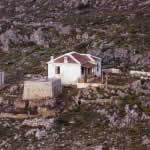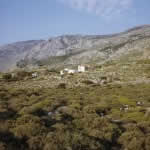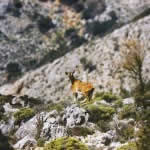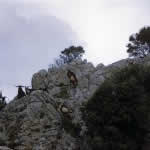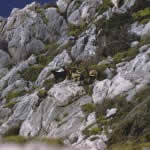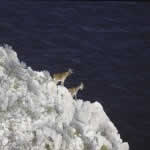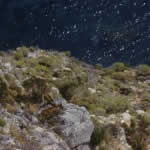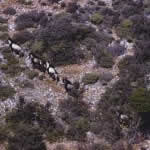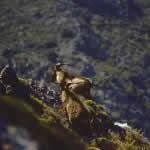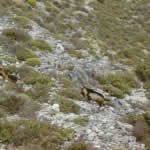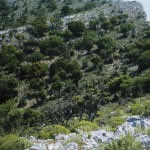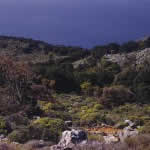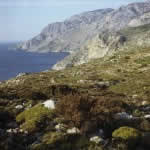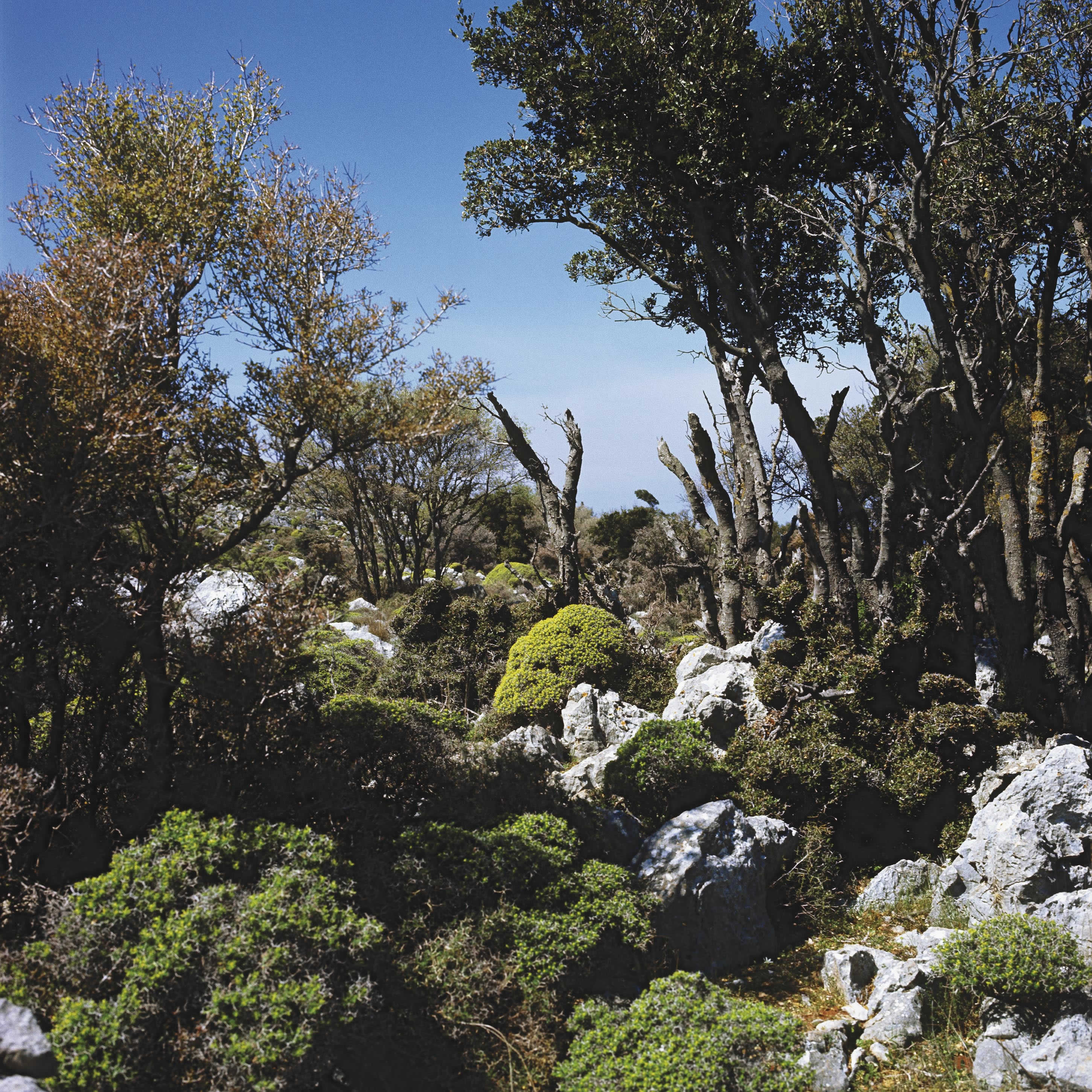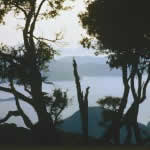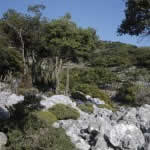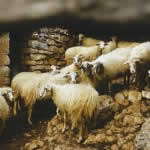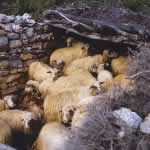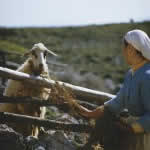The island of Gioura was a royal possession and is now owned by the Greek State. It is the most efficiently protected area of the Marine Park Northern Sporades. One or two wardens stay there permanently, at least since the 1950s, several decades prior to the park’s foundation. The wardens report to the Forestry Department on Skopelos.The reason for this strict protection is the belief that the endemic goat breed on Gioura represents a unique wild species.
The mountainous, inaccessible landscape of Gioura (reaching 800 m hight) provided refuge for some domestic goats that had run away from settlers on Gioura – we do not know when that happened; certainly a very long time ago. The goats became feral by returning to the behaviour of wild animals. After the Second World War more domestic goats were brought to Gioura; they cross-bred with the older stock. Hunting was not efficient in reducing the numbers; so the goats now over-populate the island, denude the slopes and destroy the remaining oak woodlands.
In my monograph study of 1963 about all wild and feral goat populations on islands of the Aegean (Crete, Erimomilos and Gioura mainly), I provided the scientific evidence for this hypothesis. There is no indication, though, from where this breed originally came from and by which people it was introduced to the island. In the article: „Gioura – civilization over 10.000 years“ I have discussed that question further.
I strongly recommend to drastically reduce the number of free-roaming goats on Gioura. The best solution being a total eradication on the rugged island after transfer of a small herd to a controlable island (e.g. Agios Georgios between Alonnisos and Skopelos).
Literature: Schultze-Westrum, T. 1963, Die Wildziegen der griechischen Inseln. In: Säugetierkundliche Mitteilungen, 11, 145 – 182

